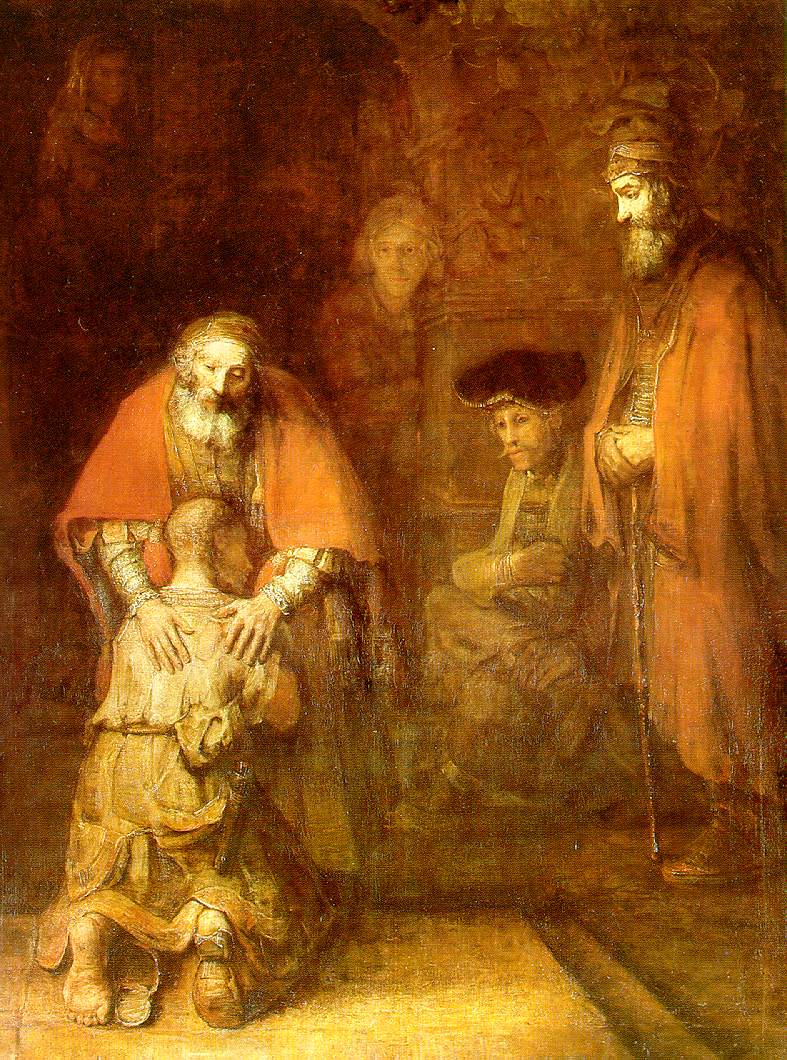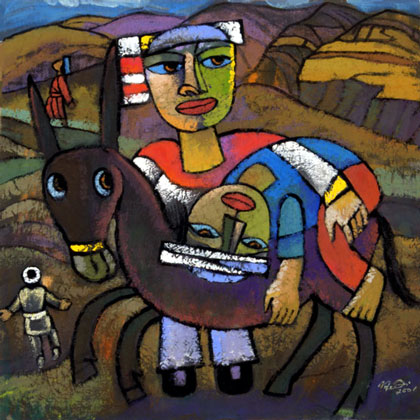
(Luke 15:11-32)

“Good
Samaritan” by He Qi (Luke 10:29-37)
What’s the Story?
I. Required readings
Christian Biography for the Day: Hildegard of Bingen
Reflect on the two artistic representations to the right and the familiar stories behind them:
Jacqui Banaszynski, “Why We
Need Stories”
(Copyrighted article available through
Canvas)
Chimamanda Adichie, "How to tell a story" (Ted Talk)
"Seeing
White" Podcast,
Episode 1 ("Turning the Lens" 16 m) and
Episode 2 ("How Race was Made" 28 m)
II. Quotations for the
day
"A need to tell and hear stories is essential to the species Homo sapiens--second in necessity apparently after nourishment and before love and shelter. Millions survive without love or home, almost none in silence; the opposite of silence leads quickly to narrative, and the sound of story is the dominant sound of our lives, from the small accounts of our day's events to the vast incommunicable constructs of psychopaths."
--Reynolds Price, A Palpable God
“Jesus was not a theologian. He was God who told stories.”
--Madeleine L’Engle, Walking on Water: Reflections on Faith and Art
III. Journal prompts
1. What do you learn about God’s character by
reading the book of Jonah?
2. Much of the opening four chapters of Luke is very familiar. Try to read slowly and notice things you
haven’t before. If you had never heard
this set of stories before, what do you think would most surprise you about the
God revealed in and through them?
3. If one of the main ways (if not the main way) we come to understand
ourselves and the world around us is through stories, it probably makes sense
to pay attention to the storytellers who shape our imaginations. Who do you think are some of the most
influential storytellers in our society and what are some of the primary
“storylines” that we are offered through which to make sense of our lives?
(Don’t limit yourself to individuals here; the Banaszynski
article above reminds us, for example, that journalists rightly think of
themselves as storytellers.)
IV. Links of possible
interest
Are you interested in learning a bit more about Hildegard’s music? If so, read the excellent introduction to this topic here.
Since 2003, award-winning documentary producer Dave Isay has been involved in a massive national oral history project called StoryCorps. This project is intended to collect hundreds of thousands of stories from everyday Americans. Isay writes:
"Over
the past year and a half, we've seen the profound effect StoryCorps
has had on the lives of those who have participated in the project, and we've
seen the power that these stories have had on the millions who have heard them.
We believe that listening is an act of love. StoryCorps
will engage communities, teach participants to become better listeners, foster
intergenerational communication and help Americans appreciate the strength in
the stories of everyday people they find all around them."
Click here to listen to some of these powerful stories.
There’s a rapidly expanding movement in the business world called (among other things) “Corporate Storytelling.” Click here for a brief introduction to why businesses have to pay serious attention to the importance of stories.
The
International Storytelling
Center is located in nearby